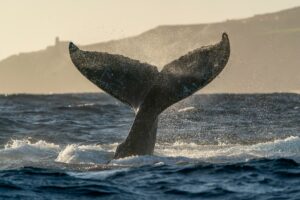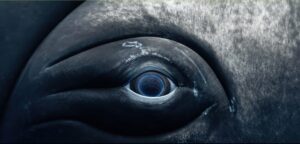Rudolph is the world’s most famous reindeer. His shining red nose is known for helping Santa’s reindeer navigate through the starry night sky on Christmas Eve. But as it turns out, the reindeer have such excellent night vision that they never really needed him.
Reindeer eyes do something not seen in any other animal. They change color with the season. Go and look at a reindeer in summer and you will see a pair of golden brown eyes staring back at you. In winter, they change to blue. The surface of their eyes, the tapetum lucidum, is a light-enhancing tissue. It is this that changes color.
This color change allows them to do two things: see better through heavy snow and perceive ultraviolet light. For years, researchers have wondered why reindeer eyes have evolved in this way. Nocturnal animals usually have this type of eye tissue, which helps them see in low light. But reindeer are not nocturnal.

Photo: Shutterstock
Night vision needed
Researchers believe that instead, the color change is an adaption to help them see in winter. Nocturnal or not, reindeer spend a lot of the polar winter in the dark or near dark. It could also explain why they change specifically to blue.
“If the color of the light in the environment is primarily blue, then it makes sense for the eye to enhance the color blue to make sure a reindeer’s photoreceptors are maximizing those wavelengths,” said study lead Nathanial Dominy.
When the tapetum turns blue, it also helps them see UV light. To learn more, the researchers studied the only herd of reindeer in the UK, which live in the Cairngorms mountains of Scotland.
The animals do one other slightly unusual thing: They eat huge amounts of lichen. This has been another mystery to scientists. Lichen is not particularly nutritious, but reindeer gorge on it. They eat one species (Cladonia rangiferina) to such a degree that it is known as reindeer moss.

Photo: Shutterstock
Why reindeer moss?
In the Scottish highlands, the reindeer eat this lichen in winter almost exclusively. Again, this is a peculiar trait for such large mammals. Very few rely on a singular food source. This begs two questions: Why do reindeer do this? And could it be linked to their unusual eyes?
The new research answers both questions. Reindeer moss is a very light-colored lichen that forms huge mats across the ground. Humans would struggle to see it against the snow. Out of 1,500 species of lichen in the Highlands, only reindeer moss and a few other species absorb UV light. Since reindeer can detect UV, to them the light lichen stands out as dark patches against the snow.
When their eyes are blue, their retinas process approximately 60% of UV light. During winter they see the world through a purple lens. The more UV light, the darker something seems to them. This intriguing survival mechanism helps them find food.
“If they can see lichens from a distance, that gives them a big advantage, letting them conserve precious calories at a time when food is scarce,” Dominy said.






